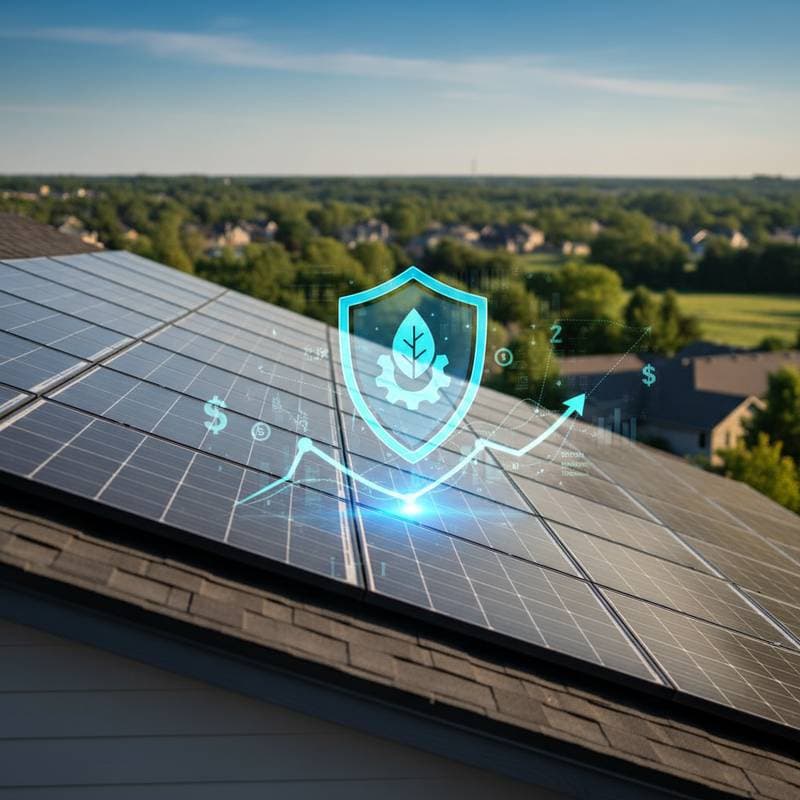How Much Does Solar Panel Maintenance Cost? 2025 Pricing Guide
Solar energy systems now provide enhanced value as maintenance expenses decline nationwide. Professional services for solar panels range from $120 to $480 per visit. Most homeowners pay approximately $250 for a standard cleaning and inspection.
Data from leading solar service providers indicate a 35 percent reduction in average pricing compared to prior years. Three primary factors shape the total expense: system size, roof accessibility, and service level. Larger setups demand extended cleaning and more inspection areas. Steep or elevated roofs raise labor charges. Regional variations also play a role, particularly in areas with high salt or dust exposure, such as coastal or arid zones.
Routine maintenance elevates energy efficiency by as much as 25 percent, according to Solar Energy Industries Association reports. Lower costs render professional care more attainable. Homeowners benefit from increased output, reduced equipment issues, and quicker returns on their solar investments.
Detailed Cost Breakdown
Average Pricing Structure
Providers typically bill by panel or entire system. National rates fall between $3 and $10 per panel. For a standard 25-panel residential array, cleaning expenses average $250 to $400. A base fee of $120 to $150 often applies, accounting for travel, labor, and initial checks.
Smaller or ground-based systems at the lower end may total $150. Intricate rooftop configurations with varied angles reach $480 or higher. In sunny climates, twice-yearly scheduling maintains peak performance, though it doubles annual outlay while ensuring steady yields.
System Size and Scope
The scale of the installation influences labor duration. Every additional 10 panels increases costs by $40 to $60. A 40-panel setup, for instance, ranges from $380 to $480. A smaller 10-panel unit costs $150 to $200.
EnergySage data shows that systems exceeding 6 kilowatts necessitate thorough inverter evaluations, adding 15 to 25 percent to the bill. These elements ensure comprehensive coverage without unnecessary escalation.
Material and Quality Tiers
Basic services use manual methods with eco-friendly cleaners like SunSystem EcoWash, at about $5 per panel. Intermediate options incorporate deionized water and gentle brushes to avoid surface damage, priced at $7 per panel. Advanced packages feature robotic cleaners or water recycling tech from Kärcher SolarClean, around $9 per panel.
Elevated tiers frequently bundle warranties and ongoing monitoring. CleanTechnica analysis reveals that such services boost yearly energy production by 12 percent, delivering clear returns for expansive installations.
Complexity and Access Variables
Elements like roof slope, building height, and debris levels alter pricing. A two-level structure with sharp inclines may hike fees by 20 to 30 percent, owing to extra safety measures and paced work. Metal roofs or solar-integrated shingles demand custom tools, adding $50 to $100 per visit.
Labor costs differ by location, with cities charging 10 to 15 percent more than rural spots. These adjustments reflect practical challenges in service delivery.
Service Types and Comprehensive Pricing
Standard Maintenance Package
This option covers panel washing, visual assessments, inverter reviews, and connection verifications. Sessions last 60 to 90 minutes and cost $200 to $300. It suits newer installations or light soiling.
Included tasks:
- Surface cleaning of panels
- Examination of frames and seals
- Inspection of wiring
- Testing of output efficiency
Premium Maintenance Package
Enhanced protocols include thermal imaging, electrical analysis, and detailed reports. Prices span $350 to $480, marking a 30 to 40 percent premium over basics. For sizable arrays, early detection of issues like microcracks averts expensive fixes.
Additional features:
- Thermal imaging across modules
- Efficiency report with benchmarks
- Testing of sealants and boxes
- Documentation for warranty adherence
Such thoroughness proves worthwhile for systems over five years old or facing harsh conditions.
Add-On Services
| Add-On Service | Average Cost | Value Benefit |
|---|---|---|
| Bird Deterrent Mesh | $150-$250 | Blocks nesting and aids ventilation |
| Inverter Tune-Up | $100-$180 | Prolongs equipment durability |
| System Monitoring Setup | $80-$120 | Supports remote output oversight |
Combining multiple add-ons yields 10 to 15 percent savings versus separate bookings.
Professional vs. DIY Maintenance
DIY Cost Breakdown
Individuals may clean using extendable brushes, mild soaps, and harnesses. Tools from Unger or Ettore run $70 to $120. A rented pole system adds $50 daily. Sessions require 3 to 4 hours, totaling $100 to $160, plus risks of injury, damage, or suboptimal results.
Professional Advantages
Experts deliver covered services with high-end gear valued in thousands. They finish in under two hours, backed by assurances. Coverage for warranties and liability equates to 10 percent of system value. Professionals sidestep errors that could harm glass or invalidate guarantees.
Decision Framework
Self-cleaning works for accessible ground arrays. Hire specialists for roofs, aging panels, or warranted units. A pro visit pays off if it halts a 2 percent efficiency loss, recouping costs swiftly.
Cost-Saving Strategies for Solar Maintenance
Timing Optimization
Plan visits in spring or autumn for up to 20 percent off through seasonal promotions. Midweek appointments cut another 5 percent amid lighter schedules.
Smart Shopping Tactics
Compare quotes from at least three certified providers via platforms like EnergySage. Seek bundles that integrate cleaning with inspections for 15 percent reductions. Verify certifications from the North American Board of Certified Energy Practitioners to ensure quality without excess fees.
Steps to Maximize Solar Returns
Integrate maintenance into annual budgets to capture the 35 percent savings trend. Pair professional cleanings with energy monitoring apps for real-time insights. These practices sustain 25 percent efficiency gains, shorten payback periods to under seven years, and secure long-term financial and environmental benefits.



